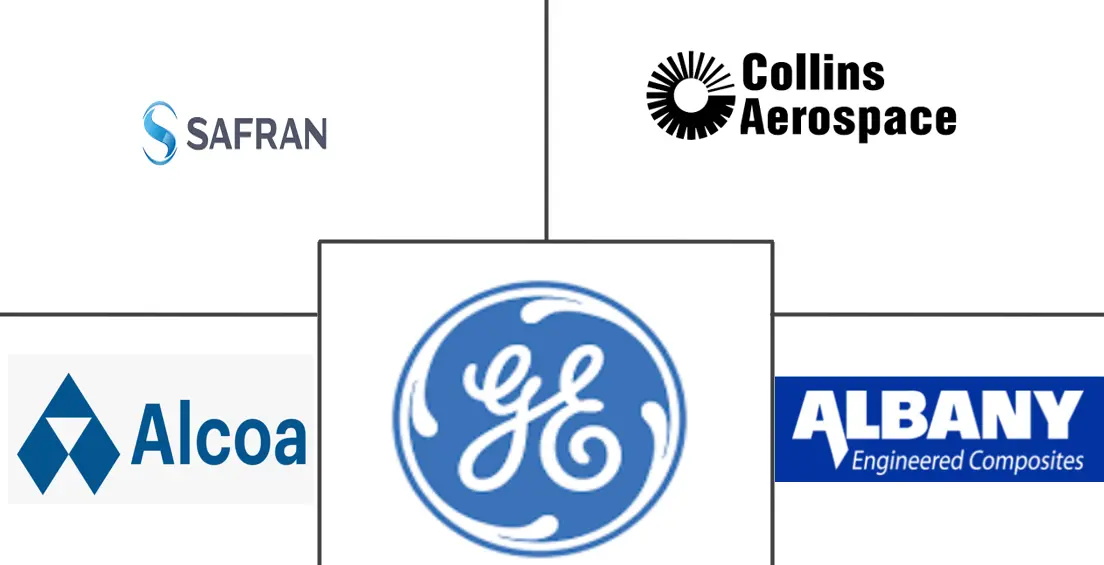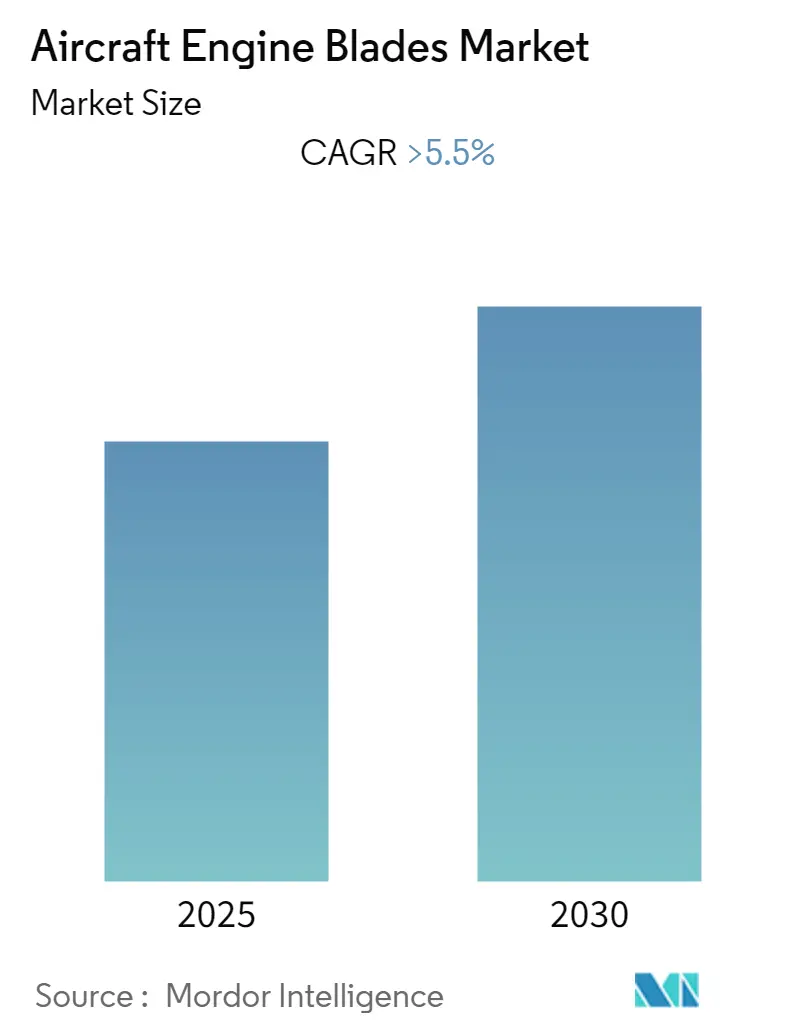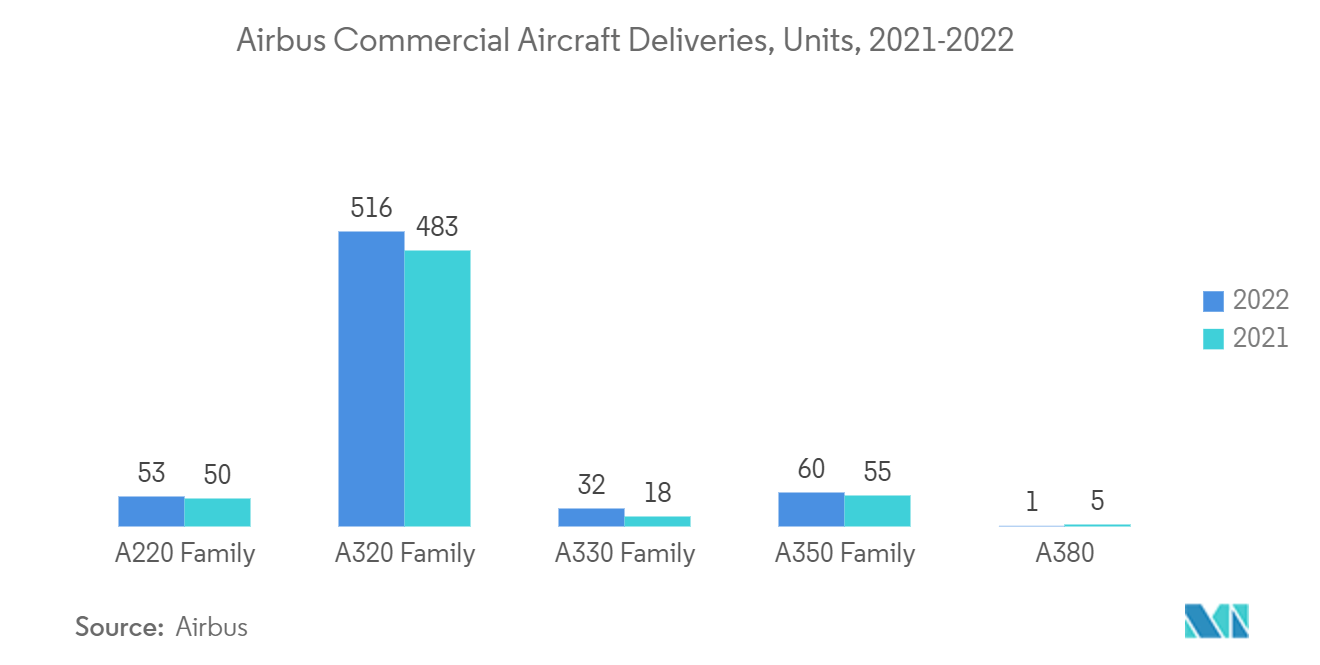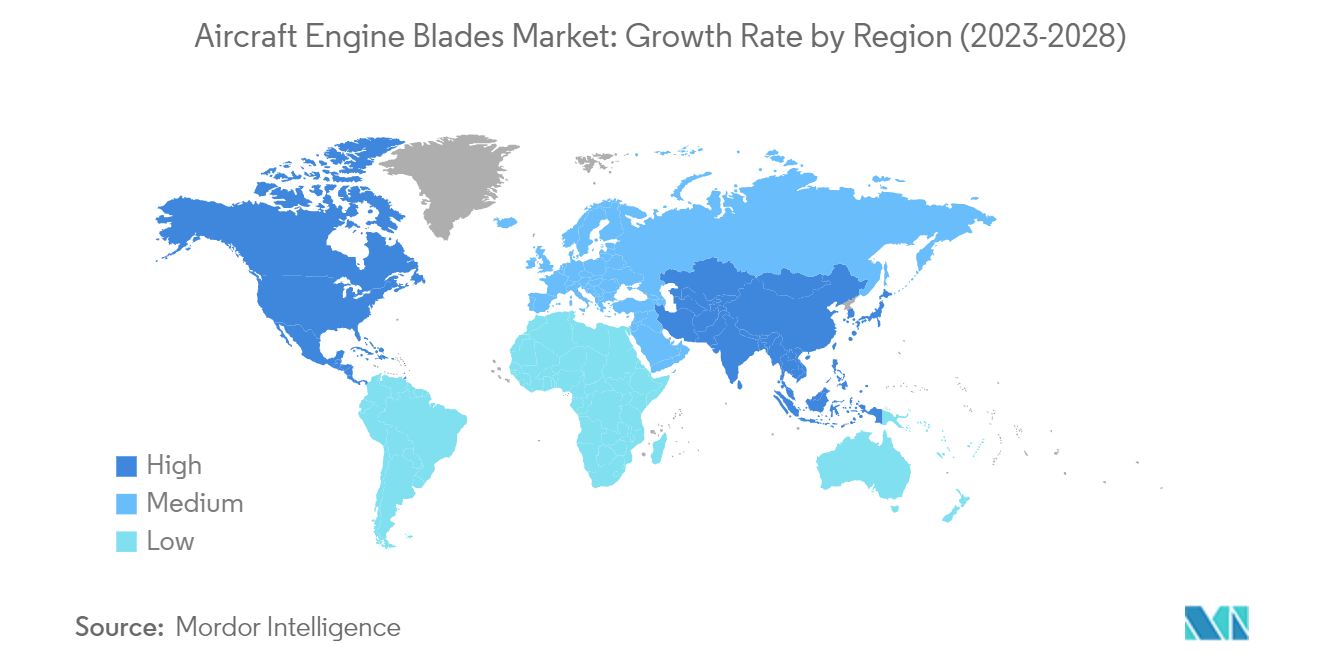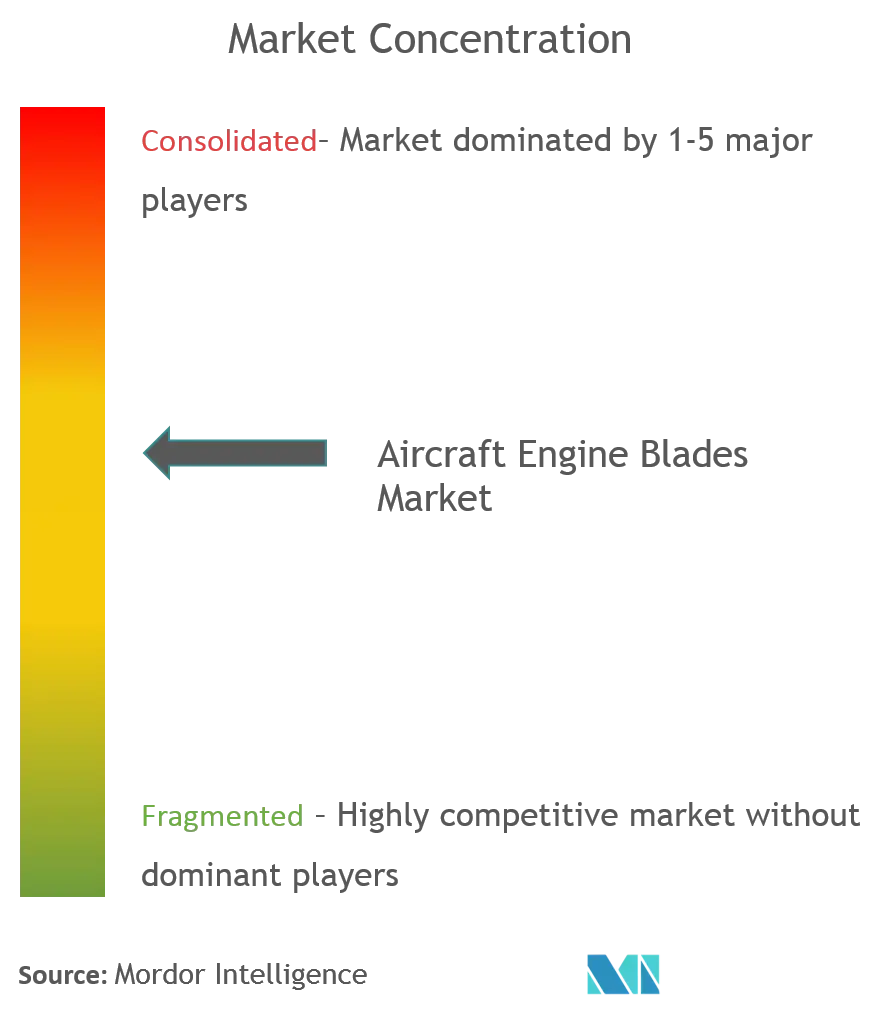Aircraft Engine Blades Market Analysis
The Aircraft Engine Blades Market is expected to register a CAGR of greater than 5.5% during the forecast period.
- The COVID-19 pandemic significantly impacted aircraft suppliers worldwide, impairing several aspects of the value chain, such as a dip in demand, financial exposure, worker impairment, and supply disruptions. Some of these disruptions are still persistent in the sector, which has limited the growth of the aircraft engine blades market to a certain extent. The commercial aviation sector has partially recovered from the setback driven by growth in fleet size due to passenger traffic growth. Since the military aviation sector was minimally affected due to the pandemic, considering the deployment of turbine engine blades in military aircraft, the considerable rise in military spending may boost industry recovery.
- The demand for engines and other aviation-related components has expanded dramatically, creating demand-side pressure on the engine OEMs and compelling them to expand their manufacturing capabilities to cater to the growing demand. New aviation emission norms are also encouraging operators to opt for a modern low-emission engine for their fleet to ensure compliance with the emerging emission standards across the globe. The new-generation engines require extensive R&D, thereby driving the resources invested toward developing and producing new-generation engines for modern aircraft models.
Aircraft Engine Blades Market Trends
The Commercial Segment is Expected to Register the Highest CAGR during the Forecast Period
- In 2022, the commercial sector had a considerable proportion of the aircraft engine blades market. This was mostly due to increased worldwide airline purchases for newer aircraft to replace aging fleets and extend their service offering. The growing demand for commercial aircraft results from increased global air passenger traffic, which has driven carriers to purchase new-generation aircraft to assure profitability.
- As an aircraft model is designed to be integrated with limited engine options, this has resulted in a rise in orders for new gas turbine engines to integrate onboard the new aircraft due to be delivered to airline operators. According to the latest data from International Air Transport Association (IATA), air passenger traffic will reach 4 billion in 2024. Furthermore, as per the Commercial Market Outlook (CMO) 2022 released by the Boeing Company, the demand for new aircraft will exceed 41,000 units during 2022-2041.
- Engine manufacturers are facing a massive backlog of orders totaling more than USD 140 billion. As a result, engine original equipment manufacturers (OEMs) such as Rolls-Royce Holding PLC, Pratt & Whitney (Raytheon Technologies Corporation), Safran SA, and the General Electric Company are expanding existing facilities to increase output. New aircraft programs, such as the Boeing B777X and the Comac C919, are also projected to drive demand for aviation engine blades in this class. The GE9X engine powers the Boeing B777X. The General Electric Company manufactures the GE9X engine, and it features 3D-printed low-pressure turbine blades and sophisticated carbon-fiber composite fan blades.
Asia-Pacific is Expected to Generate the Highest Demand During the Forecast Period
- The number of people opting to air travel in Asia-Pacific is now on the rise compelling the airlines to undertake fleet expansion initiatives. As per the latest forecasts by the Boeing Company, Southeast Asia alone would generate a demand of 3,430 narrowbodies and 740 widebody aircraft by 2041. China and India are the two most important demand generators, with India alone projected to generate demand for over 2,200 new aircraft during the period.
- Asia Pacific was already a maintenance, repairs, and operations (MRO) hub, and the robust demand projections have encouraged aircraft engine original equipment manufacturers (OEMs) and supply chain players to expand and set up new facilities in the region to decrease supply chain complexity and tap into the increasing potential market. Furthermore, rising military expenditure is likely to boost military aircraft development and purchase. At the same time, the region's growing general aviation fleet is expected to drive the expansion of the aircraft engine blades market.
Aircraft Engine Blades Industry Overview
- The aircraft engine blades market is moderately consolidated in nature, with few players holding significant shares in the market. Some prominent market players are Safran SA, General Electric Company, Raytheon Technologies Corporation, Alcoa Corporation, and Albany International Corp. The key players in the market are focusing on the development of low-weight and efficient engine blades for different types of aircraft. Growing expenditure on the R&D of new-generation engines and the introduction of composite aircraft engine blades will create better opportunities for market players in the coming years.
- Moreover, engine manufacturers are increasingly purchasing smaller blade producers to acquire access to manufacturing technologies such as additive manufacturing, which can enhance their total production rate. For instance, Raytheon Technologies Corporation is one of the key competitors in the aerospace supply chain due to its overwhelming dominance in the supply chain and its presence in every step of the aircraft and engine manufacturing process, including aftermarket.
Aircraft Engine Blades Market Leaders
-
General Electric Company
-
Safran SA
-
Raytheon Technologies Corporation
-
Albany International Corp.
-
Alcoa Corporation
- *Disclaimer: Major Players sorted in no particular order
Aircraft Engine Blades Market News
- July 2022: Airbus and CFM International, a 50/50 joint venture between GE Aviation and Safran Aircraft Engines, announced a collaboration to flight test CFM's cutting-edge open fan engine architecture. This new engine architecture is expected to improve fuel efficiency, reduce carbon emissions and noise levels, and increase the aircraft's performance.
- July 2021: GKN Aerospace and KTH announced a collaboration to develop fan technology for smaller electric aircraft, with the goal of achieving sustainability targets. The proposed propulsion technology utilizes a nested fan rather than a standard propeller, which is expected to offer significant advantages in terms of safety, noise level, and engine installation. The collaboration aims to deliver an innovative, lightweight, and efficient electric propulsion system that can be used in a wide range of applications, including air taxis, drones, and small regional aircraft.
Aircraft Engine Blades Industry Segmentation
The aircraft engine blades consist of vanes and valves used in aircraft. These vanes and valves may produce a smooth gas flow by directing and compressing the air inside the engine. A turbine blade, an aerodynamic blade positioned on the rim of a turbine disc with multiple blades, generates a tangential force that rotates a turbine rotor. Both steam turbines and gas turbine engines use these blades. The gas produced by the combustor, which has an elevated temperature and pressure, is used by the blades to generate energy. The engine's blades are typically its limiting element.
The aircraft engine blade market is segmented by blade type, application, material type, and geography. By blade type, the market is segmented into compressor blades, turbine blades, and fan blades. By application, the market is divided into commercial, military, and general aviation. By material, the market is segmented into titanium, nickel alloy, composites, and other materials. By geography, the market is segmented into North America, Europe, Asia Pacific, Latin America, and the Middle East and Africa.
The market sizing and forecasts have been provided in value (USD million) for all the above segments.
| Blade Type | Compressor Blades | ||
| Turbine Blades | |||
| Fan Blades | |||
| Application | Commercial | ||
| Military | |||
| General Aviation | |||
| Material | Titanium | ||
| Nickel Alloy | |||
| Composites | |||
| Other Materials | |||
| Geography | North America | United States | |
| Canada | |||
| Europe | United Kingdom | ||
| France | |||
| Germany | |||
| Rest of Europe | |||
| Asia-Pacific | China | ||
| Japan | |||
| India | |||
| South Korea | |||
| Rest of Asia-Pacific | |||
| Latin America | Brazil | ||
| Mexico | |||
| Rest of Latin America | |||
| Middle-East and Africa | United Arab Emirates | ||
| Saudi Arabia | |||
| South Africa | |||
| Rest of Middle-East and Africa | |||
Aircraft Engine Blades Market Research FAQs
What is the current Aircraft Engine Blades Market size?
The Aircraft Engine Blades Market is projected to register a CAGR of greater than 5.5% during the forecast period (2025-2030)
Who are the key players in Aircraft Engine Blades Market?
General Electric Company, Safran SA, Raytheon Technologies Corporation, Albany International Corp. and Alcoa Corporation are the major companies operating in the Aircraft Engine Blades Market.
Which is the fastest growing region in Aircraft Engine Blades Market?
Asia Pacific is estimated to grow at the highest CAGR over the forecast period (2025-2030).
Which region has the biggest share in Aircraft Engine Blades Market?
In 2025, the North America accounts for the largest market share in Aircraft Engine Blades Market.
What years does this Aircraft Engine Blades Market cover?
The report covers the Aircraft Engine Blades Market historical market size for years: 2019, 2020, 2021, 2022, 2023 and 2024. The report also forecasts the Aircraft Engine Blades Market size for years: 2025, 2026, 2027, 2028, 2029 and 2030.
Our Best Selling Reports
Aircraft Engine Blades Industry Report
Statistics for the 2025 Aircraft Engine Blades market share, size and revenue growth rate, created by Mordor Intelligence™ Industry Reports. Aircraft Engine Blades analysis includes a market forecast outlook for 2025 to 2030 and historical overview. Get a sample of this industry analysis as a free report PDF download.

